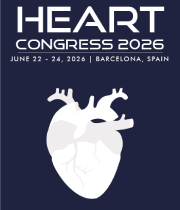Angiography and Radiology
Radiology, in the broader context, encompasses various imaging techniques used in medical diagnostics, and angiography is one of the specialized branches within this field. Radiology techniques also include X-rays, computed tomography (CT), magnetic resonance imaging (MRI), and ultrasound, each offering unique insights into different aspects of the body's anatomy and function. Radiologists, highly trained medical professionals, interpret these images to aid in the diagnosis and treatment planning for a wide range of medical conditions. The field of radiology continually evolves with advancements in technology, allowing for more detailed and accurate imaging. The collaborative use of angiography and other radiological methods has significantly improved the precision and effectiveness of medical interventions, contributing to enhanced patient care and outcomes.

Shuping Zhong
University of Southern California, United States
Ahdy Wadie Helmy
Indiana University School of Medicine, United States
Federico Benetti
Benetti Foundation, Argentina
Ishan Abdullah
George Washington University School of Medicine and Health Sciences, United States
Sana Tariq
Manchester University NHS Foundation Trust, United Kingdom
Achi Kamaraj
Royal Brisbane and Women’s Hospital, Austria



Title : Historical evolution from OPCAB to MIDCAB to mini OPCAB surgical technique and results
Federico Benetti, Benetti Foundation, Argentina
Title : Fats of Life, the skinny on statins and beyond !
Ahdy Wadie Helmy, Indiana University School of Medicine, United States
Title : Novel ways of cardiovascular risk assessment
Syed Raza, Awali Hospital, Bahrain
Title : Study of pathological cardiac hypertrophy regression
Shuping Zhong, University of Southern California, United States
Title : Personalized and Precision Medicine (PPM) and PPN-guided cardiology practice as a unique model via translational applications and upgraded business modeling to secure human healthcare, wellness and biosafety
Sergey Suchkov, N. D. Zelinskii Institute for Organic Chemistry of the Russian Academy of Sciences, Russian Federation
Title : Atypical takotsubo cardiomyopathy presenting as st-elevation myocardial infarction
Sana Tariq, Manchester University NHS Foundation Trust, United Kingdom